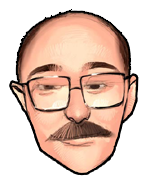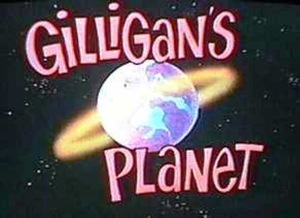Robert Lamb ~ Filmation Studios ~ Laid Off!
1982 - The Big Empty

Robert Lamb ~ Filmation Studios ~ Laid Off!
1982 - The Big Empty


Next,
“He-Man and the Masters of the Universe!”
See "Legal Stuff" for copyright information about Filmation and other entities mentioned here.
All other original material on this website is copyrighted by Robert Lamb.
Contact me at robertartwriter@gmail.com


Leave??!!!
I Just Got Here!!!
After the 1981 season wound down, all but a few storyboard artists were laid off, including me. I was thunderstruck. I had finally broken into the animation industry only to find out it was seasonal. Just a few people worked year round back then. The rest of the writers, storyboard artists, animators, layout artists, background painters, cell painters, camera operators, etc. only got five to six months employment and then the trap door. This really messed with my head. It never occurred to me that my dream job would drop me like a hot potato when my part of the work was done.
Karl Geurs, the storyboard department head, arranged for some of us to work in the animation department, inbetweening drawings of Blackstar and Shazam! to hold us over for a Fat Albert project. Unfortunately, that deal didn’t come together in time. Fat Albert and the Cosby Kids did resurface as a syndicated series in between seasons one and two of He-Man and the Masters of the Universe. After six weeks of Blackstar tweens, there was no further justification to keep us on the payroll and we were laid off at the end of October 1981.

1982 was a rough year. Filmation pitched dozens of shows to the networks. Bob Kline and others created scores of presentation art but all that was sold were thirteen episodes of Gilligan's Planet. With only twenty percent of the programming that we had during the 1981 season, all the departments were running much smaller crews. The other studios weren't hiring so I went back to work as a store clerk at Aaron Bros. Art Marts, a picture frame and art supply store, to pay the rent.
Then came the strike.
The Cartoonist Union Strike of 1982
There had been a successful strike in 1979, which, among other things, was about runaway overseas production. Hanna-Barbera and other studios had sent some of their work to Asia. Because most of the animation produced at that time was domestic, the 1979 strike halted production. Within two weeks the studios struck a deal for increased pay and benefits.
By 1982, the studios were doing it again. Even Filmation had sent The New Adventures of Zorro to Japan in 1981. Although, in Filmation's case, it wasn't a desire to cut costs and break the union. Filmation was maxed out and needed to farm out the show in order to make airdates.
A strike is only effective if it can impede a producer's ability to produce. By this time, the other studios already had their offshore production deals worked out. With no leverage the strike fizzled.
Lou Scheimer was wholeheartedly for keeping animation in the USA and even picketed his own studio to show support.
We loved him for that.
A New Year and a New Hope
Between the strike and fewer shows sold to the networks for Saturday morning, I had been out of animation work for over a year when He-Man and the Masters of the Universe started production at Filmation. Because I was still classified as a storyboard apprentice, I was not among the first called back to the storyboard department. Vic DalChele, got in before me and gave me a copy of the series bible by Michael Halperin. I wrote a one act sample script hoping to break into the writing department. Arthur Nadel at first told me he didn't usually take spec scripts but was impressed at how well I grasped the concept of the series and characters. But he had enough writers. Thanks, but no thanks.
Then, in March of 1983, a few positions in the storyboard department opened. Because of the ambitious nature of this new action-adventure series, it was decided to test the abilities of prospective storyboard artists. There were several applicants but not everyone could storyboard action-adventure shows because of the more realistic character designs. The test came from the opening scene from "The Cosmic Comet" which ironically I later boarded for production. My test was approved and I rejoined the storyboard staff. However, I was considered no longer an apprentice, but not quite a journeyman. The union had two in-between levels called “1st six months” and “2nd six months.” After that came the journeyman classification, which is the highest pay grade.
What really excited me was the order for sixty-five half hour episodes for first-run syndication. This was the equivalent of five network series. The idea was to create thirteen weeks of original programming before episodes would repeat. Could this be the beginning of steady employment? Would we be able to more fully develop characters and storylines? The answer to these questions was “YES!”
Another interesting aspect would be the absence of network censors interfering with the stories. Filmation would use internal guidelines based on past experience with the networks, but we wouldn’t be hindered by a network censor’s latest pet peeve.
We would still have to work with Mattel because He-Man and the Masters of the Universe was their property. Wisely, Lou Schiemer had negotiated a great deal of autonomy in the contract. We wouldn’t tell Mattel how to make their toys, so Mattel shouldn’t tell Filmation how to make cartoons. Of course, every effort to accommodate Mattel’s interests would be made within reason. But the creative control remained at Filmation.
An action-adventure series to board, an increase in pay, steady employment—I was so glad to be at Filmation again.
Featured in cereal:geek issue eight
by James Eatock